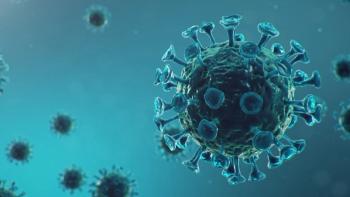
CDC Updates List of Those With Highest Risk of Severe COVID-19 Illness
An updated list of risk factors for severe COVID-19 expands possible underlying medical conditions and removes the age threshold.
New evidence has prompted the CDC to update its list of demographics at highest risk for severe novel coronavirus disease 2019 (COVID-19), expanding the selection to further include various age groups and other medical condition factors.1
Previously, the CDC stated that the at-risk selection consisted of older adults and those with underlying medical conditions. The new list has removed the specific age threshold, explaining that as an individual ages, the likelihood of severe complications continues to increase.2
In a video highlighting these updates, Georgia Peacock, MD, MPH, FAAP, and director of the division of human development and disability, said that individuals age 65 or older, individuals who live in a nursing home or a long-term facility, or those with underlying medical conditions, are at further risk of complications from COVID-19. The list of underlying medical conditions was also expanded to include:1
- Chronic obstructive pulmonary disease
- Serious heart conditions, such as heart failure, coronary artery disease, or cardiomyopathies
- Sickle cell disease
- Severe obesity or body mass index of 30 or higher
- Type 2 diabetes
- Chronic kidney disease undergoing dialysis
- Immuno-compromised state in those going through cancer treatment, transplant patients, those with poorly controlled HIV or AIDS, and those who experience prolonged use of corticosteroids or other immune weakening medications
Another study, published in the Morbidity and Mortality Weekly Report (MMWR), examined the at-risk potential of pregnant and non-pregnant women, and determined that while pregnant women were more likely to be hospitalized, admitted to the intensive care unit (ICU), and receive mechanical ventilation, they were not at greater risk of death from COVID-19 than non-pregnant women.3
The CDC notes that any activity that involves contact with others carries a degree of risk and encourages those who are at increased risk to educate themselves about alternate daily activities and make informed decisions about which ones to perform. Meanwhile, prevention strategies should still be maintained, including social distancing, frequent hand washing, limiting contact with surfaces, and wearing a cloth mask and keeping 6 feet apart when around other people.1
The CDC will continue to update its resources as more data is gathered. More information can be found on the CDC’s website at
References
- Centers for Disease Control and Prevention. Who Is at Increased Risk for Severe Illness? Published June 25, 2020. Accessed June 29, 2020.
https://www.cdc.gov/coronavirus/2019-ncov/need-extra-precautions/people-at-increased-risk.html?CDC_AA_refVal=https%3A%2F%2Fwww.cdc.gov%2Fcoronavirus%2F2019-ncov%2Fneed-extra-precautions%2Fpeople-at-higher-risk.html - Centers for Disease Control and Prevention. CDC updates, expands list of people at risk of severe COVID-19 illness. Published June 25, 2020. Accessed June 29, 2020.
https://www.cdc.gov/media/releases/2020/p0625-update-expands-covid-19.html - Centers for Disease Control and Prevention. Characteristics of Women of Reproductive Age with Laboratory-Confirmed SARS-CoV-2 Infection by Pregnancy Status. Morbidity and Mortality Weekly Report (MMWR). Published June 26, 2020. Accessed June 29, 2020.
https://www.cdc.gov/mmwr/volumes/69/wr/mm6925a1.htm?s_cid=mm6925a1_w
Newsletter
Pharmacy practice is always changing. Stay ahead of the curve with the Drug Topics newsletter and get the latest drug information, industry trends, and patient care tips.

















































































































